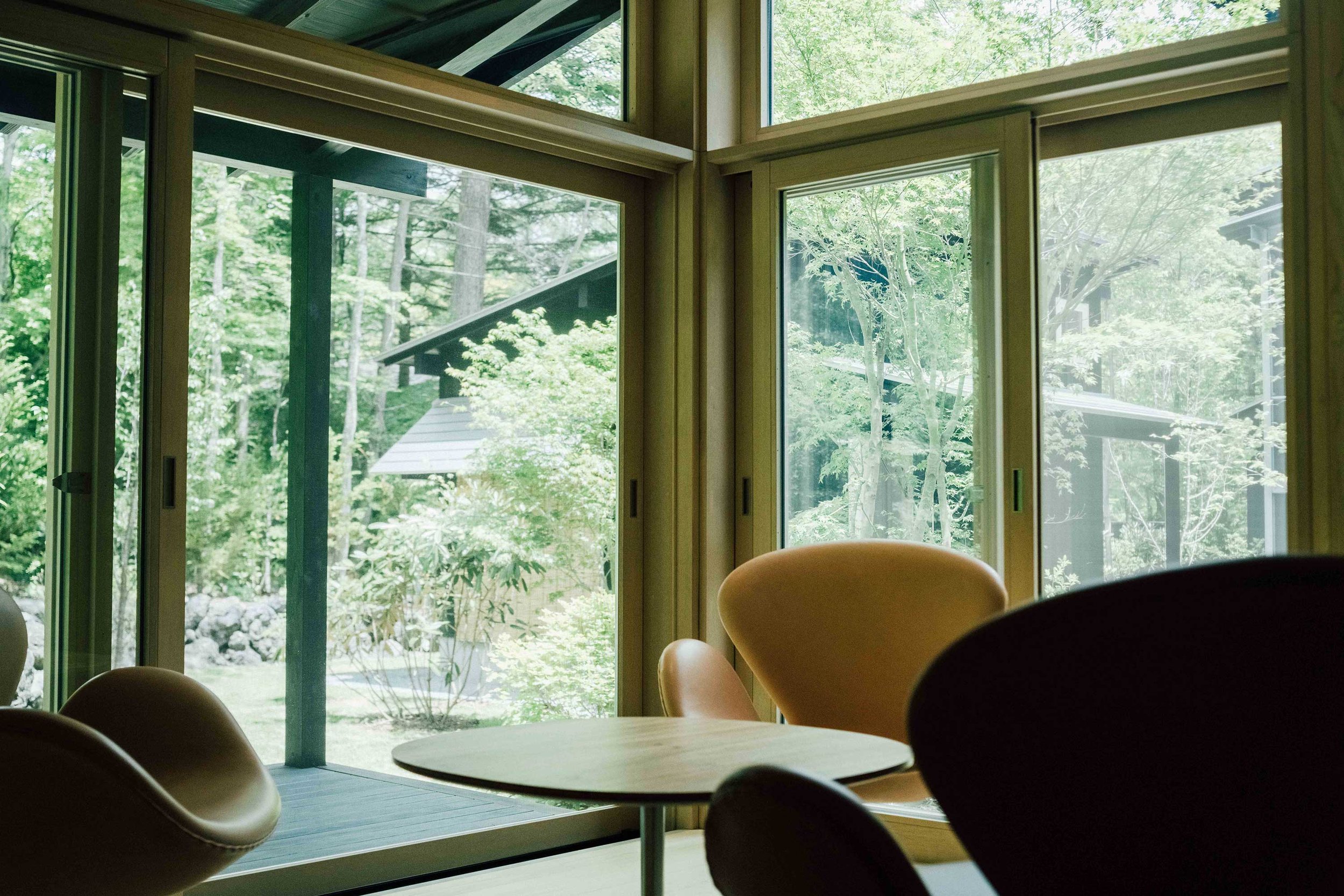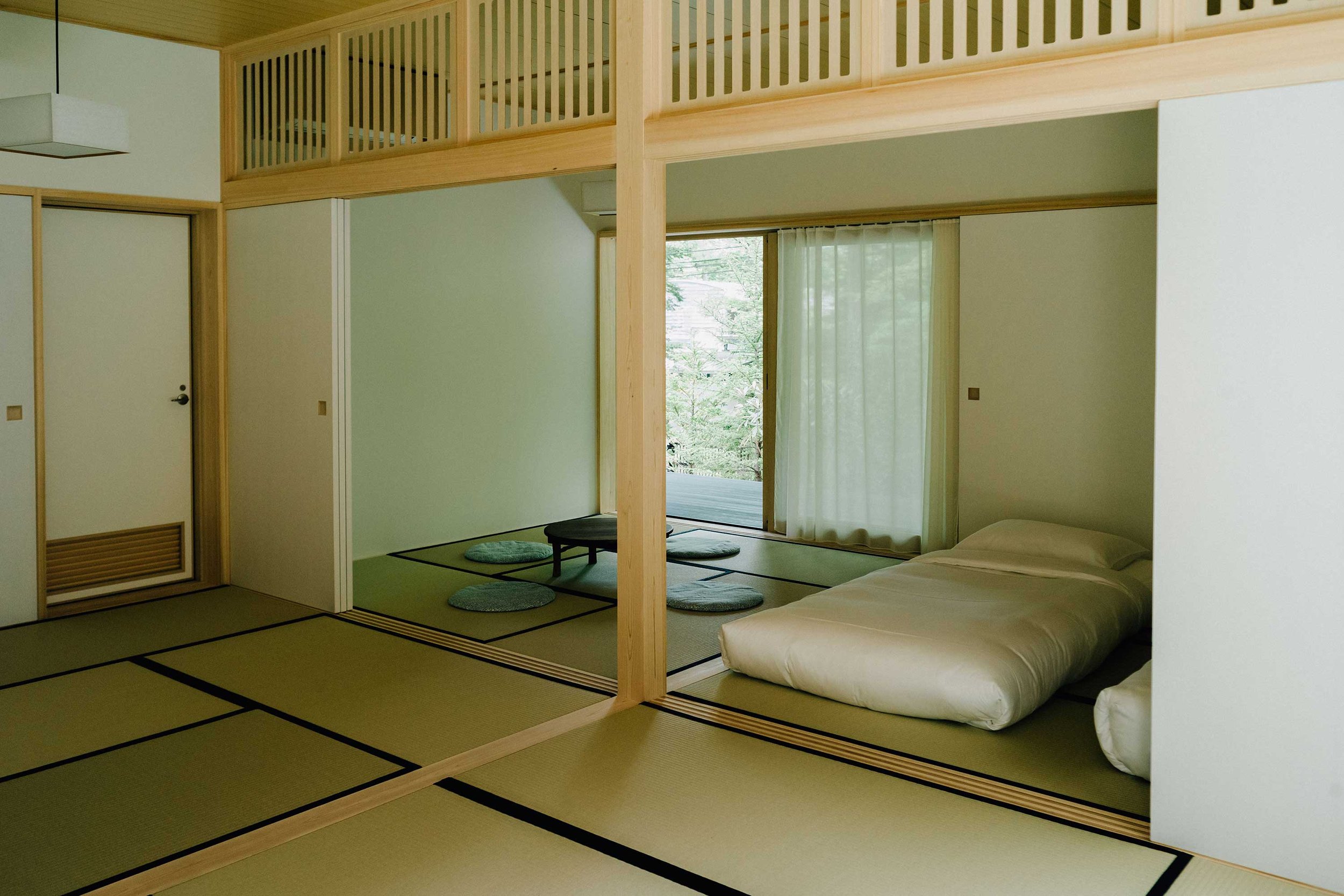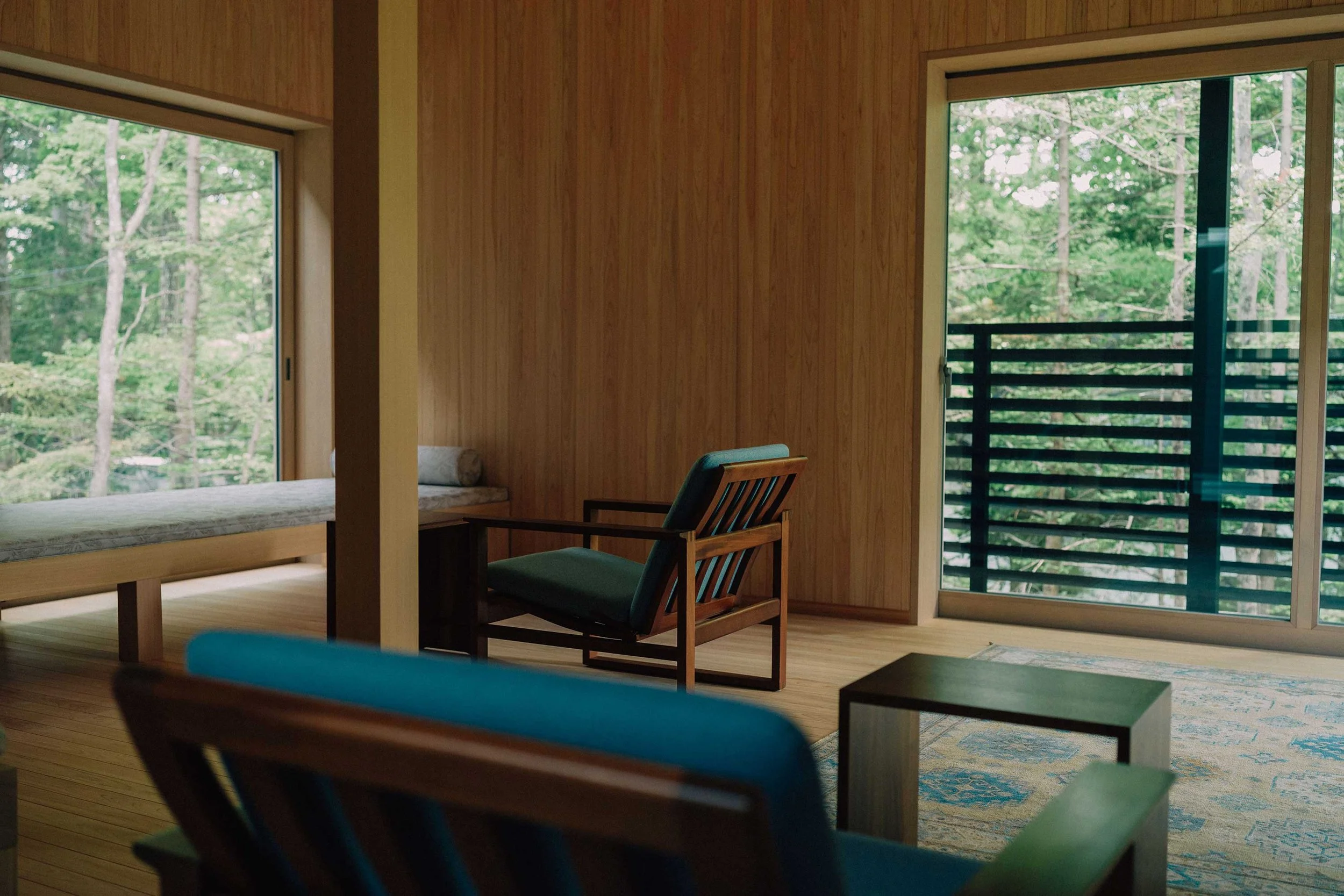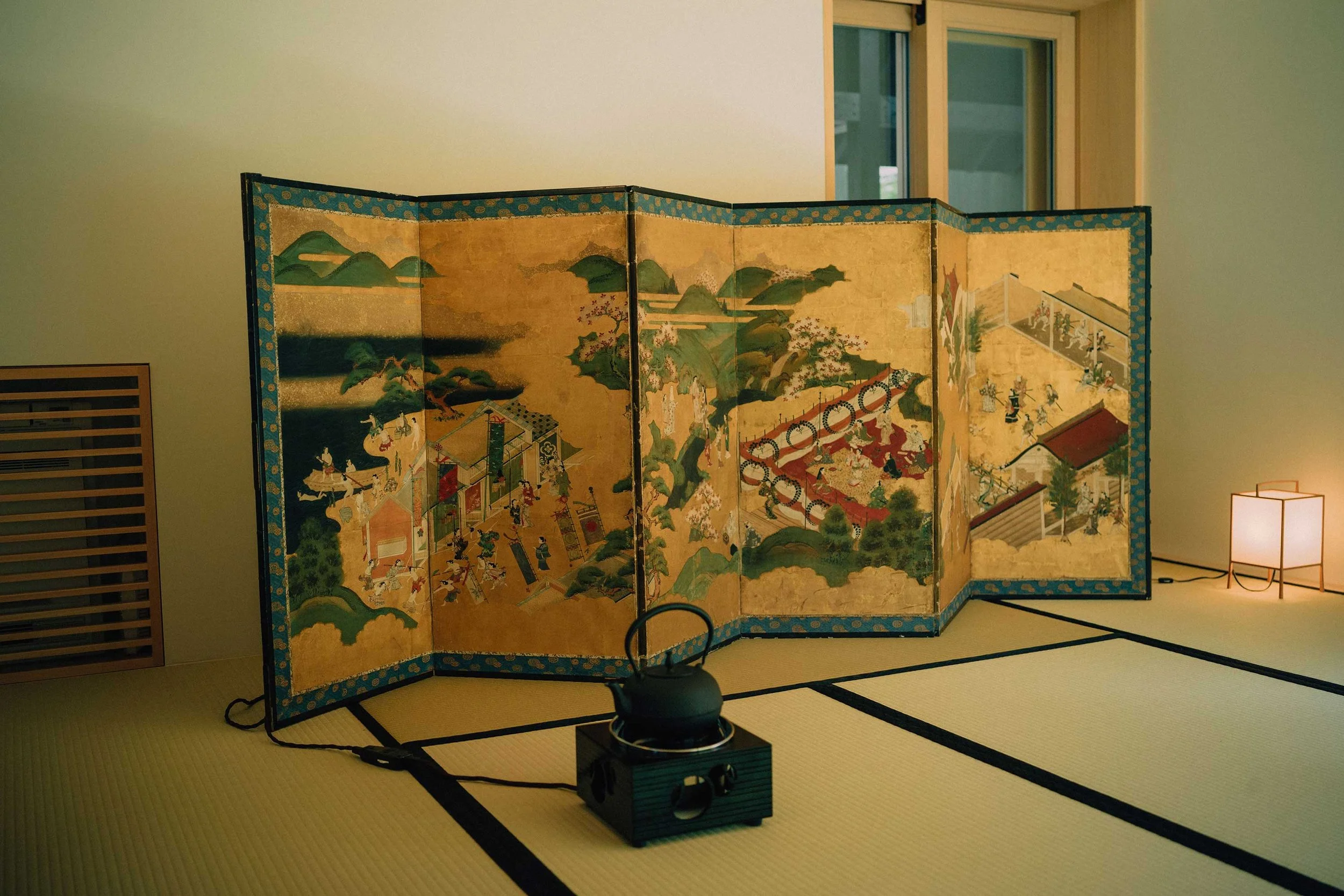Shishi-Iwa House Adds New Property by Ryue Nishizawa
The Shishi-Iwa House brand continues to expand with the Ryue Nishizawa-designed No.03, and experiences that highlight the locality
Text by Philip Annetta
Images by Kazumasa Harada
Four years ago, the world felt different. Fresh off the Shinkansen from Tokyo, I lowered the car window on the drive from Karuizawa station to Shishi-Iwa House No.01 and enjoyed the cool, fragrant early spring air and the view of the stars. Soon, warm light from the double-height entrance punctured the darkness, and the ensuing days were full of calm, reflective experiences and the luxury of Shigeru Ban’s thoughtful, minimal design.
Fortunately, some things haven’t changed, and the Shishi-Iwa House brand has continued to develop its offerings while remaining true to its DNA. House No.01 remains, its double-storey A-frame snaking carefully through the plot’s original garden. Last year saw the opening of Shishi-Iwa House No.02, next door to the original property and also designed by Ban, and this year No.03, a design by Ryue Nishizawa of SANAA just a short skip down the leafy street.
House No.02, another double-storey structure, hides behind a monolithic wooden wall, but only momentarily — step behind and you’re on a gentle, winding ramp to the public spaces on the upper level. Here, restaurant Shola, helmed by rising chef Masashi Okamoto, serves all three properties with delectable contemporary cuisine that showcases international influences and the superb local produce. The space is voluminous due to the use of an innovative light, but strong composite wood developed by Ban’s team for the frame; furnished with custom versions of Ban’s signature paper tube furniture, it opens to a spacious, tranquil terrace, and is also the venue for talks and wine, whisky and tea tastings — many under the guidance of youthful in-house tea master and sommelier Yusuke Mori — and more. The ground floor hosts 12 intimate guestrooms that privilege the calmness of wood and bespoke textiles.
This time, though, House No.03 is home, and a compelling one at that. Once again set over two storeys, the structure is a series of wooden pavilions, dark outside and light within, with overlapping roof lines and geometries that create interstitial spaces where engawa join them into a cohesive whole, both surrounded and punctuated by gardens.
The engawa are key to creating ma, an ‘in-between space — a negative space that is not an object’, says Nishizawa. This creates a flow typical of Japanese architecture, which, as Nishizawa points out, is a ‘collection of flows’ rather than a collection of rooms. But rather than provoke a feeling of emptiness or anxiety, the space has a sense of freedom, helped by the human scale that’s a brand hallmark.
This positive and negative spatial dynamic is just one of House No.03’s nourishing dichotomies. Built and natural, shadow and light, geometric stone courtyards and wild forests all create a striking effect. But a standout is the black cedar exterior and the welcoming light hinoki of the interior. Selected by Nishizawa for its scent and brightness, the wood forms the basis of the entire interior, its unique sensory qualities suffusing the spaces with a shrine-like atmosphere.
The experience is not limited to the structure, however. Fireside talks, art and architecture events, producer tours and more feature. Indeed, the local producers are a centrepiece: an increasing proportion of Shishi-Iwa’s vegetables come from Duca Farm, whose owner Yusuke Iizuka balances life as a DJ by night with cultivating vegetables that burst with flavour. The windswept nearby hills are also home to high-spirited cattle farmer Jun Ito, who nurtures just 50 head of shorthorn cattle over 380 hectares, most of which is forest. Ito pays extraordinary attention to his charges. There’s no single answer, for example, on when an animal is ready — it depends on size, health, coat and a range of other factors, and is only determined after a thorough inspection by Ito himself. All are fed on a special fermented feed mix, which includes grape skins from nearby Kusunoki Winery, whose owner Shigeyuki Kusunoki left his corporate career behind to grow grapes two decades ago and now produces vintages from a surprisingly wide range of varietals.
Expansion is on the cards for Shishi-Iwa House, both within and outside Japan, and founder Huy Hoang remains committed to the model. ‘You discover what’s so special about each local town,’ he says. ‘And you take that and you introduce it to the world.’










